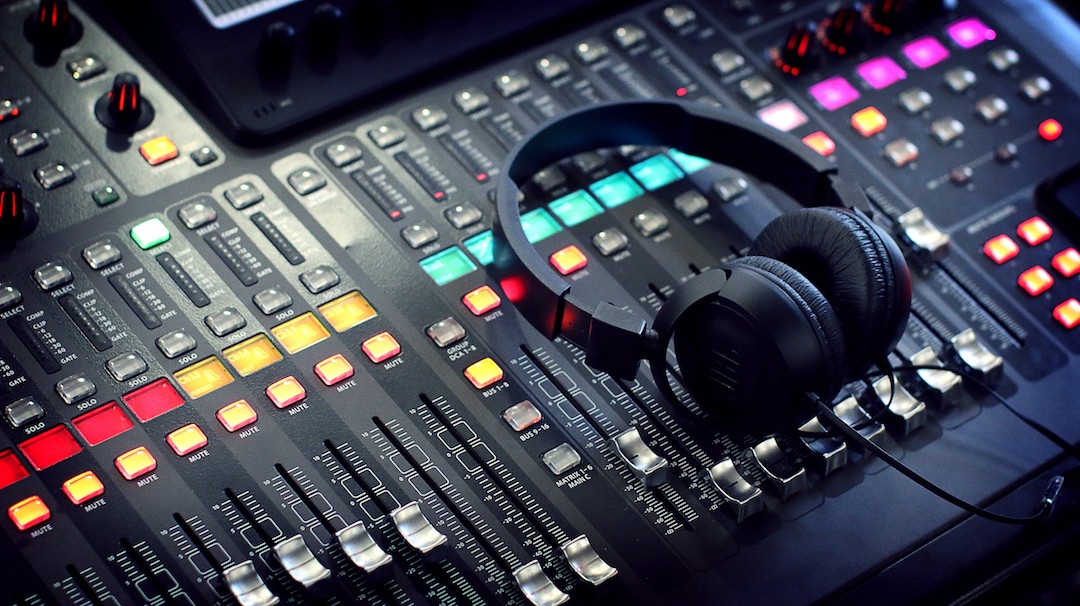You’re an aspiring audio engineer or music producer and you want your mixes to sound professional. However, you don’t have thousands of dollars to sink into expensive gear to help you get that “studio sound”. You only have your computer and your bedroom.
Good news is that this is a common starting point. While the internet will make you believe that Your mix isn’t complete without THIS plugin!, the truth is that you don’t need a ton of equipment or plug-ins for your mix to sound great. You can use what you have at your disposal to professionally polish your next song or mix.
All you need is a computer, a song or mix to work on, and headphones. That’s it.
Now that you have your equipment, let’s get started.

DAW
Digital Audio Workstations are blank canvases that allow you to work with audio clips, such as Ableton or Pro Tools. The fully unlocked versions have incredible functionality but cost a pretty penny. However, if you are looking to save, you have options like Cakewalk, which is fully free and has similar functionality to a paid platform. There are a ton of really great resources on the web about how to get a DAW up and running.
Load your song in your DAW and you’re ready for the next step.
Mixing
Mixing is basically level balancing, and you don’t need a ton of equipment to make your songs sound awesome. Sure, there are plenty of tools that can give you bold effects, but 90% of the mix boils down to these four concepts:
- Gain Staging: Taking the volume from its starting position and lowering it until it feels right. Think of this as a rough draft of your mix. It doesn’t need to be perfect, you just need some space to operate. Do this with each element.
- EQ (Equalization): Carving out space for the different elements in your mix. Identify what the most important part of the sound is and get rid of the sounds you don’t need. This will save your mix from being “muddy”.
- Compression: Volume automation. A compressor listens to a sound to see if it goes above a certain decibel threshold. If it does, it will lower the volume by a set amount (the ratio) for each decibel it goes above that threshold. For example, if you have a compressor that has a threshold of -7 db, and a ratio of 2:1, if a singer sings at -5 db you should see -4 db of volume reduction. Think of it as regulating the volume of sound coming in. You’re looking to keep things within a comfortable range that doesn’t fluctuate too much between loud and soft.
- Panning: Making some space. Keep the important elements in the middle and surround them with everything else. You know how a band has the lead singer up front and center with the drums in the back, guitar on the left, bass on the right, etc.? Same basic concept!
Any DAW you use has stock plug-ins to accomplish these four steps. Now that you’ve done the heavy lifting, it’s time for some polishing.

Mastering
If you compare audio engineering to painting, the production phase is putting the color on the canvas, the mixing phase is shaping and mixing those colors together, and mastering is the varnish after everything is in place that makes it pop. You only need 3 elements to master a track: an EQ, a limiter, and a loudness meter.
- EQ: Remove harsh frequencies. You used an equalizer for mixing, but at the mastering stage we want to use it to find and remove frequencies we don’t like. Whether you’re using one that is visual or not, you should be able to adjust the shape of the node you’re using to the absolute smallest it can go. Play the song on a loop and drag this node at a high volume sweeping through the whole frequency spectrum. If you hear something that sounds unpleasant or like glass shards, keep the node at that exact frequency and reduce the volume to around -2 db. Repeat until you’ve cleared the whole spectrum. We’re slightly reducing these frequencies so the pleasant ones can shine through a bit more.
- Limiter: Control the peaks of your song. A limiter is a very strong compressor. Instead of being able to adjust how much volume is reduced, this has a very high ratio and acts like a brick wall for the sounds coming through. Much like the compressor, this is a powerful tool that should be used carefully so the sound isn’t squished. You want to keep the dynamics of your track while increasing the overall volume. A limiter at this point should have plenty of room to operate if you gain staged properly (it’s all connected!), so try overdoing the gain and slowly dialing it back until you feel like it’s in a nice spot.
- Loudness Meter: Make sure you are up to industry standards. Different platforms use different loudness levels, so this is an important step to take before sending your song out for distribution. There is a great free option to help make sure you’re hitting the right levels: Youlean. This type of meter measures the overall loudness of a mix and charts it on a graph so you can see the dynamics of your track. It also includes different presets for you to shoot for based on where you’re submitting (Spotify, Apple Music, etc.).
The best advice when it comes to audio mixing is simple – trust your ears. If it sounds good, it sounds good. There is no one right way to get a song to sound great.
Audio is all about experimentation and you as the mixer are a mad scientist twisting knobs and faders until a fantastic track comes out on the other side. You have everything at your disposal to get on a Spotify playlist or have a song underscore a Netflix show without shelling out thousands of dollars. In fact, it’s that DIY attitude that is going to get you far in the entertainment industry.
Written by Brendan Monte | Audio Engineer


